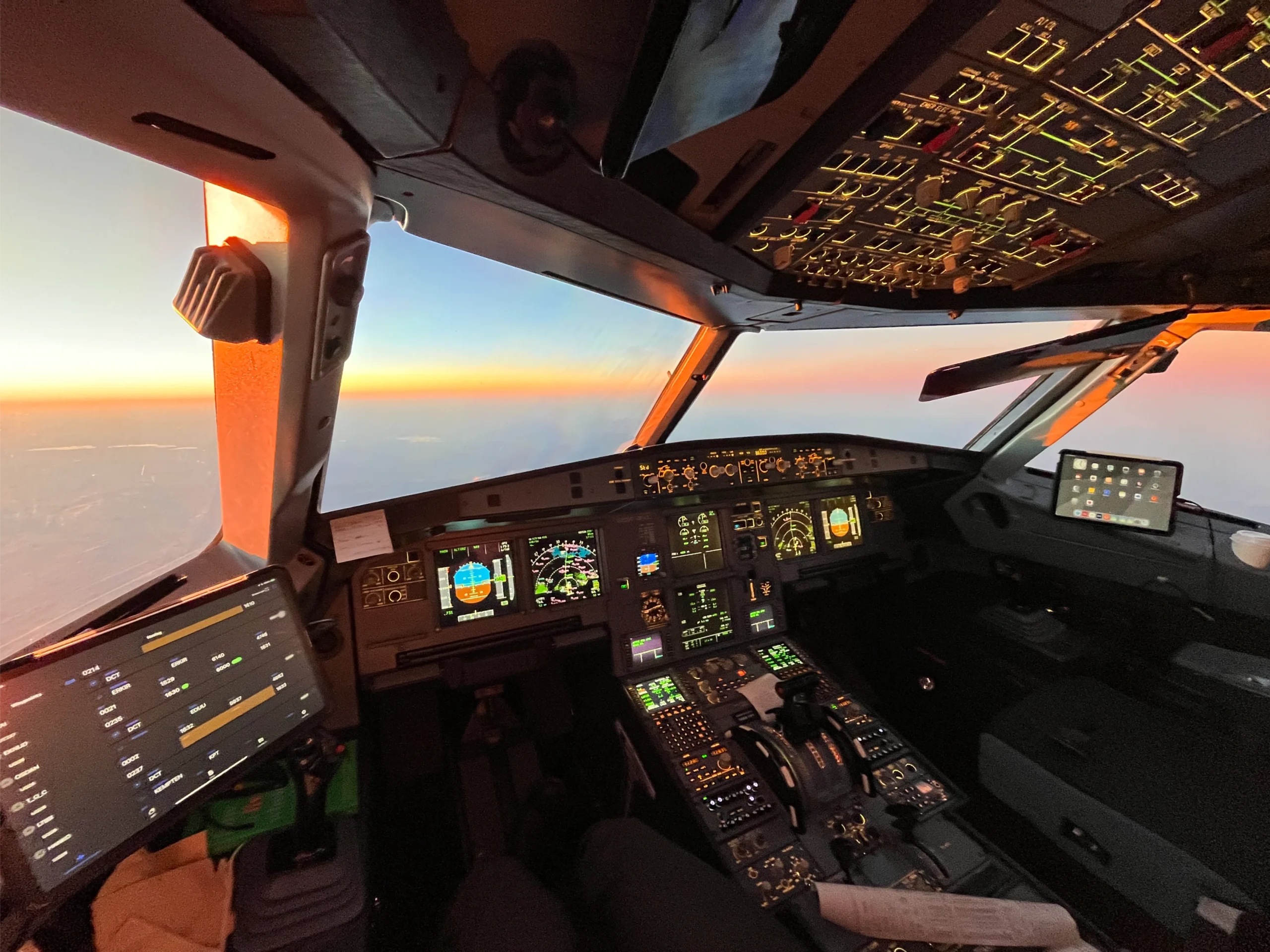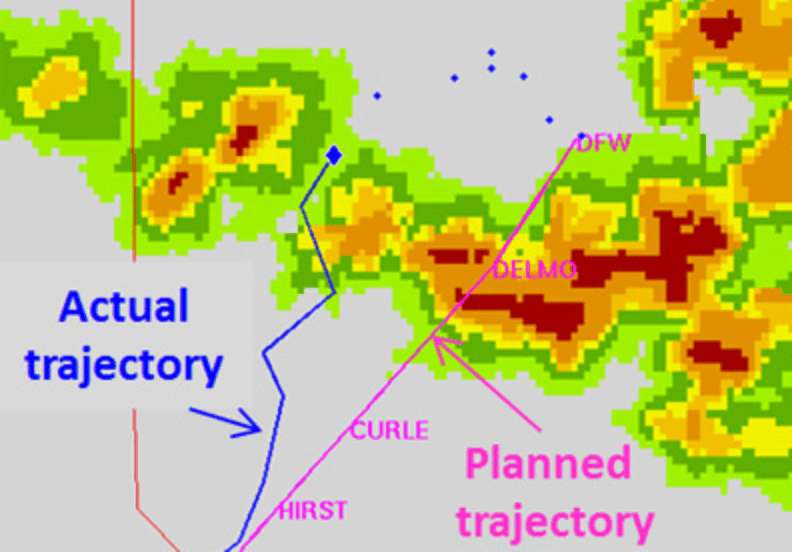
How to Become an Airline Pilot in 2026 (Updated Guide)
Learn how to become an airline pilot in 2026 with this updated guide. Training routes, costs, MPL vs ATPL, funding options, and airline advice.
Share Post
It’s a word nobody likes to hear just after boarding an aircraft….and tends to be preceded with other words like ‘unfortunately’ and ‘sorry’ to tee you up for the bad news. But what actually are ‘slots’? And why are passengers often made to spend multiple hours sat on a stationary plane waiting for their slot, instead of being able to remain in the terminal?
As an airline pilot with over 10 years experience dealing with the slots and various other delays, I’ll do my best to reveal all in this article, along with how we handle slots & delays from the pointy end.
As I’m sure any regular traveller is unfortunately all too aware, delays due to air traffic control slots are extremely common, especially in summer. Slots are essentially take-off times, given to each aircraft by their local air traffic control unit, but often calculated at a higher level by whichever body is regulating the airspace you’re flying in. In Europe – this is ‘Eurocontrol’. It’s a way of regulating how many aircraft end up in each bit of airspace at any one time. Airspace is broken into various sectors, with each sector being controlled by a set number of controllers on the ground. Managing the quantity of aircraft in each sector at any one time is imperative to ensure that controllers are not overloaded, as well as safe separation can be kept between all aircraft in the sector. Slots are also a way to ensure airports are not overloaded with too many aircraft on the ground and nowhere to park.
A flight will have it’s planned departure time which is decided months or years in advance, and all being well, this will also be it’s slot time. However, in the world of aviation, all is often not plain sailing!
There are many reasons that an aircraft can be given a slot later than it’s planned one, however the slots tend to be generated by two main sources;
For both of these sources, the most common reasons for giving aircraft slots later than their planned departure time are the following, however they are all very much related:
a) Airport Capacity
b) Air Traffic Control Capacity / Staffing Levels
c) Weather
Airport capacity is exactly what it says on the tin. There’s a set limit on the number of movements (takeoffs & landings) that can occur each hour at an airport due to the time and distance separation required in between aircraft. There are also only a set number of parking spots available at each airport. If there’s been a delay at the airport (due to weather, an airport or ATC tech issue, an aircraft stopped on the runway, or a variety of other causes) this can have a huge knock on effect and leave lots of planes all wanting to land or takeoff at the same time. Planes that are due to takeoff will be given delaying slots, to stagger the planes departing which saves them queuing by the runway for hours burning fuel, as well as not overloading ATC ground controllers and blocking taxiways with queues. This means they’ll often remain on the parking gate for longer, or taxi to a remote holding position and absorb the rest of the delay there.
Planes that are due to arrive and are already airborne can be put into an a ‘stack’ or airborne ‘hold’ to slow the flow rate for arrivals. Essentially flying around in circles near the airport. Planes that are due to arrive but are still further away from the airport can be slowed down in the cruise (they can literally be asked to slow down to their slowest safe speed so the stacks near the airport don’t get too full). Planes that are due to land, but haven’t yet left their departure airport, can be given slots delaying their departure time, to save them slowing down or holding in the air. This hopefully shows the ripple effect of how one small delay at an airport can impact aircraft all around the network.
If en route or airport ATC staffing levels are low (a controller calls in sick, or they’re on strike….*cough FRENCH cough*) then for safety reasons, there needs to be a way of limiting how many aircraft each controller can have in their ‘sector’ at one time. The job of a controller is an intense one and if they’re overloaded, they’re more likely to make errors, or not notice things that are about to go very wrong. This is arguably becoming a more common cause of slot delays. ATC units are cost cutting and optimising their staffing levels to a minimum, which tends to mean one small staffing issue can cause widespread chaos for hundreds of thousands of passengers and crew.
Sidenote; I personally think ATC units should be forced to invest more in their staffing levels to provide more redundancy, it’s not fair on the potentially millions of people that get affected when ATC have a staffing issue, and that level of pressure is also not fair on the ATC personnel themselves who know full well the impact if they need to call in sick. There was constant serious disruption in London this summer due to ATC staffing levels, and it got to the point where airline bosses were calling for high level resignations from the ATC companies.
Weather is another factors that’s always keeping us on our toes in the aviation industry. When bad weather is impacting an airport or certain ATC sector en route, planes will need to fly around the weather as opposed to on their pre-planned path, which massively adds to the workload of the controller in that sector. These aircraft may also be spilling out into surrounding sectors if dodging the storms necessitate it (some storms can span hundreds of miles) so it adds to the surrounding controllers workload too. All this deviation leaves less room in the sky for planes to pass eachother as the area effected by weather is unusable and planes will often all be trying to funnel through the same gaps in the weather. Naturally this means the number of aircraft in the sector must be reduced, so ATC will then issue slots to aircraft that haven’t taken off yet, to control the flow rate and make sure they’re not going to get a huge influx of aircraft trying to squeeze into the now smaller sized airspace sector they control.
It’s the same story if there’s weather at either your departure or arrival airport. Planes will be dodging weather, aborting landings and maybe delaying takeoffs too due to the bad weather. This all has a knock on effect and once again means ATC may issue slots to make sure the airborne holds don’t get overloaded, as well as the runway hold point.

It can be extremely frustrating being made to board an aircraft to then be told you have a 2+ hour long slot, however it’s important to understand that slots can move around. They’re often quite dynamic and can go forwards as well as backwards, depending on the source of the delay and whether it’s improving or getting worse.
Usually a plane must takeoff within 15 minutes of it’s planned departure time. When given a specific slot however, aircraft must takeoff within a smaller window: 5 minutes before the slot time, to 10 minutes after. As slots can be very fluid, there’s every chance that a 2+ hour slot can suddenly jump forward. If you miss a slot (because you then couldn’t board and get to the runway in time) then the next slot you get could be even worse than the first. Whilst we as pilots do appreciate it sucks to be sat in an aircraft cabin rather than free to roam the terminal, this is the reason we do it…..essentially in the hope that the slot comes forward and we can get you to your destination closer to the intended time. Every companies policy is different and at the end of the day the final decision whether to board or not is down the commander, however most companies guidelines state that if a slot is less than 3 hours away, board the aircraft, if it’s more than 3 hours you can consider not boarding.
You’ve very likely boarded an aircraft that already has a big slot more times than you know, but the slot has come forwards or been cancelled before boarding was finished. Given how fluid slots are, most pilots won’t notify passengers about a slot until they need to, which tends to be during the PA once all passengers are onboard.
Once, and only once the aircraft is fully ready for pushback (all passengers are on board, jet bridge has been removed and a tug team is connected and in place) pilots can send a ‘ready message’ to ATC even what they have a hefty slot. This ready message lets ATC know that we are ready to move and means that if any other aircraft miss their slots, or there are slot improvements available, they’ll be able to offer that slot to us. In my experience, around 50% of the time, a slot will drastically come forwards after a ready message is sent. This is another reason we still board passengers even with a big initial slot.
If you’re a proactive airline pilot, you can get straight on the phone to your flight planning team when you get a big slot, to ask for re-routing options if the slot is due to en route airspace restrictions. In most airlines, these teams will already be looking at these options anyway but it can sometimes help to give them a nudge or suggest alternative options (or so we like to think anyway!).
On many occasions I’ve managed to get a slot removed by phoning up and requesting to re-route round an area of airspace, also informing them we’ve already put extra fuel on the aircraft to allow us to do so. Whilst it can sometimes add a few more minutes onto your flight-time, it could save a few hours sat on the ground waiting for your original slot, and keep the airlines schedule running smoothly.
Other than that, it’s more about managing customers during the delay. During any slot delay longer than 20 minutes I tend to open up the flightdeck for visitors which seems to always change the atmosphere onboard. I’m yet to have a flight where no passengers have wanted to come and explore the flightdeck during a delay, and more often than not, the queue goes halfway down the aircraft immediately after making the announcement. Regular PA’s keeping the passengers well informed and giving them a full explanation as to what the slot means, and updates on whether there’s been any improvement or not, can be really important.
Honestly, just being as respectful and mindful of the crew & other passengers as possible, goes a long way. It’s hard during times like this, but making an effort to be understanding and polite can really help. Know that the crew are doing what they can, and we’re all in this together!
Overall slots are short term pain for long term gain….Whilst it can be frustrating waiting for a slot that you have no control over, know that it is all in the name of safety. Your safety, and everyone else on board your aircraft. It’s also worth noting that although the pilots & crew may put on a professional face….they are just as frustrated as you are with the slot. Any delay means longer at work (which is usually unpaid), later home time, and less rest between their next flight.


Learn how to become an airline pilot in 2026 with this updated guide. Training routes, costs, MPL vs ATPL, funding options, and airline advice.

When disaster strikes at 38,000 feet, split-second decisions save lives. Behind every pilot during an emergency lies hundreds of hours of rigorous training. How do airlines prepare flight crews to handle the unexpected? The answer reveals an intense world few passengers ever witness.